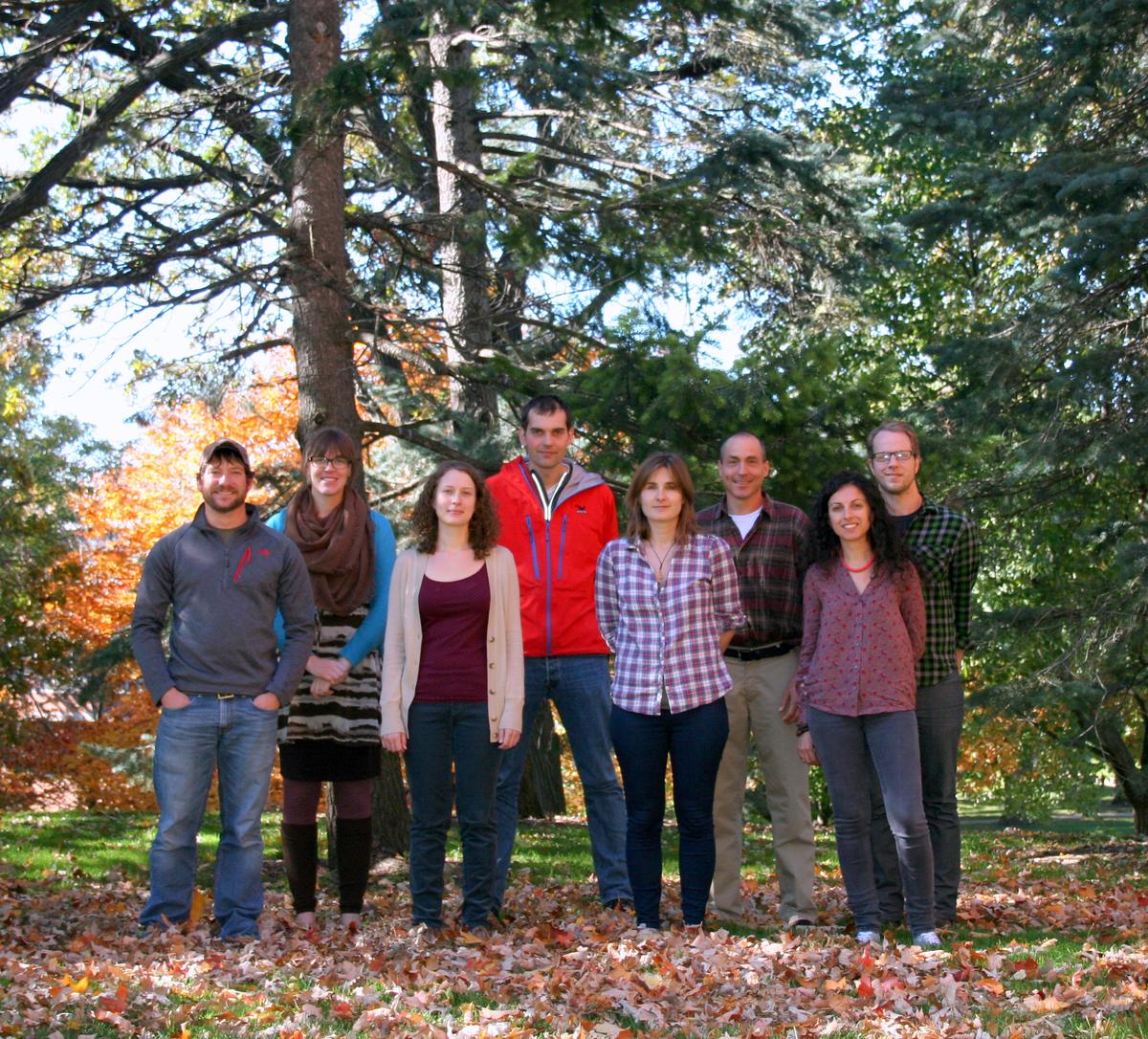Research Philosophy and Interests
I am a quantitative ecologist. As such, there is no problem requiring a quantitative solution that is, potentially, not of interest to me.
As a quantitative ecologist in a Department of Fisheries, Wildlife, and Conservation Biology (FWCB), I am interested in helping people make robust statistical inferences when confronted with a variety of messy data situations. This is a strength I bring to the FWCB faculty and students. Being a quantitative ecologist requires identifying and solving problems arising from the way data are collected in ecology and natural resource management fields.
Tailoring of models: Recent advances in statistical and computation methods, and in particular Markov Chain Monte Carlo (MCMC) techniques, have opened the door to developing sophisticated models that allow estimation of underlying biological processes of interest, while accounting for the observational processes giving rise to the data. I take advantage of these advances to develop models tailored to specific problems when data sets are rich, the problem is common (or recurring), and complex modeling is likely to offer substantially different answers than simpler methods. Examples include estimating occupancy or abundance while accounting for imperfect detection in otter and moose surveys (Aing et al. 2011, Fieberg et al. 2013, ArchMiller et al. 2018), accounting for selection bias when characterizing mixed-migration strategies of white-tailed deer (Fieberg and Conn 2014), and modeling state-dependent relationships and transition risk for ecosystems exhibiting alternative stable states (Vitense et al. 2018, 2021).
Interfacing theory with practical applications: Because complex statistical methods take more time to develop and implement, they are likely to be less well understood, and more often misapplied by biologists that lack formal training in advanced quantitative methods. Thus, there is also a real need for methods and analytical strategies that can provide robust answers, getting us 99% “of the way there” for 99% of applications. I focus much of my research on providing general guidance to biologists on how to choose and apply appropriate “simple” methods. This guidance is not through consulting, although that is possible, but rather research that demonstrates appropriate use of statistical methods and modeling strategies. Examples include illustrating how to use bootstrap methods (Fieberg et al. 2020) to account for uncertainty in population viability analyses (Ellner and Fieberg 2003) and the implications of uncertainty for estimates of extinction risk (Fieberg and Ellner 2000, Ellner et al. 2002), understanding the importance of choosing an appropriate time scale when analyzing survival data (Fieberg and DelGiudice 2009), strategies for working with autocorrelated data when estimating home ranges (Fieberg 2007a,b) or habitat selection parameters (Fieberg et al. 2010), and warning about the challenges associated with modeling time-dependent covariates (Fieberg and Ditmer 2012) and the dangers of overfitting small data sets (Giudice et al. 2012, Mech and Fieberg 2014, Fieberg and Johnson 2015).
I am fortunate to be able to work on a wide variety of problems, something I enjoy. In the words of John Tukey, "the best thing about being a statistician [or quantitative ecologist] is that you get to work in everyone's backyard." My research program works synergistically with my teaching and mentoring roles within FWCB. Working on a variety of problems provides a wealth of interesting examples for teaching statistics to students interested in fisheries, wildlife, and conservation biology. Student evaluations overwhelmingly point to the importance of using real world examples to motivate and illustrate different statistical methods. The exposure to a variety of problems and methodological solutions benefits my graduate students, especially those that envision themselves working as a quantitative ecologist for a natural resource agency. Many failures of management can be traced to the failure to monitor correctly, analyze data properly, and interpret analyses appropriately. Lastly, I am able to make valuable contributions to collaborative research with a diverse set of faculty in our department and College while also publishing papers that advance our ability to manage wildlife and other natural resources.
